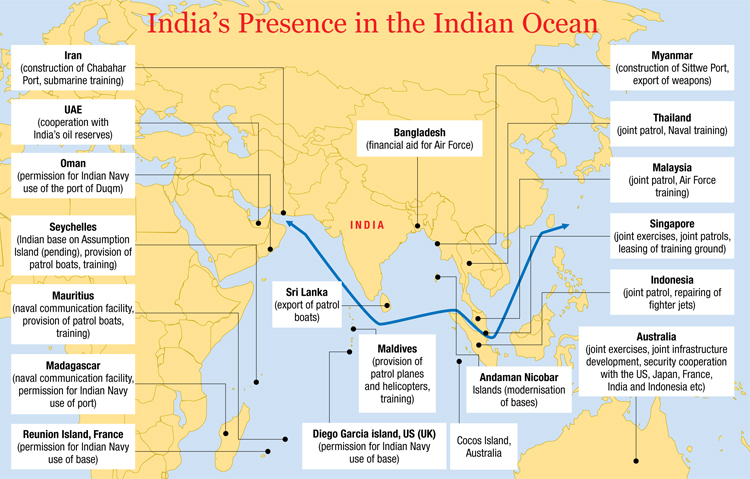International Relations
China Delivers Largest Warship to Pakistan: PNS Tughril
- 12 Nov 2021
- 5 min read
Why in News
Recently, China handed over the first Type 054A/P frigate (warship) to Pakistan. It is named the PNS Tughril.
- The PNS Tughril is the first hull of four Type 054 frigates being constructed for the Pakistan Navy.
Key Points
- Features:
- The ship is a technologically advanced and highly capable platform with enormous surface-to-surface, surface-to-air and underwater firepower, besides extensive surveillance potentials.
- This warship has world-class stealth capability and can easily dodge any radar.
- It also has long-range missiles and a state-of-the-art cannon capable of firing multiple rounds in a minute.
- The warship is fitted with a state-of-the-art Battle Management System (BMS), which will increase the fighting capability of the Pakistan Navy manifold.
- BMS basically helps communicate between the radar and the interceptor missile.
- Concerns for India:
- It will strengthen Pakistan Navy's capabilities to respond to maritime challenges to ensure seaward defence in the Indian Ocean region.
- It will form the mainstay of the Pakistan Navy fleet while bolstering the Pakistan Navy's maritime defence capabilities.
- Besides the advanced naval ships, China also partners with the Pakistan Air Force to build JF-17 Thunder fighter aircraft.
- Besides building its first military base in Djibouti in the Horn of Africa in the Indian Ocean, China has acquired Pakistan's Gwadar port in the Arabian Sea which connects with China's Xinjiang province by land in the USD 60 billion China Pakistan Economic Corridor (CPEC).
- China is also developing Sri Lanka's Hambantota port after it acquired it on 99 years' lease.
- The modernisation of the Pakistan Navy coupled with the acquisition of the naval bases was expected to shore up the Chinese Navy's presence in the Indian Ocean and the Arabian Sea.
- It will strengthen Pakistan Navy's capabilities to respond to maritime challenges to ensure seaward defence in the Indian Ocean region.
India’s Rising Profile in the Indian Ocean Region
- Various Agreements with Littoral Nations: India has negotiated agreements with several states in the littoral IOR to obtain military access to their bases.
- Such agreements, including access to Indonesia’s strategically-located deep-sea Sabang port and Oman’s Duqm port, enhance New Delhi’s geopolitical positioning as it looks to counter China’s “string of pearls.”
- Engagement Outside IOR: India has engaged with powers outside of the IOR, deepening cooperation with France and the United States through logistics agreements,
- This grants India access to port facilities at the US base on Diego Garcia (southernmost member of the Chagos Archipelago, in the central Indian Ocean) and the French base on Reunion Island.
- Quadrilateral Dialogue: The United States engages with India through the informal Quadrilateral Security Dialogue, or the “Quad,” which also includes Australia and Japan.
- Paris-New Delhi-Canberra Axis: France has called for the creation of a “Paris-New Delhi-Canberra” axis in the Indo-Pacific, underscoring India’s growing influence on geopolitics in the IOR.
- Information Fusion Centre for the Indian Ocean Region (IFC-IOR): IFC-IOR is established with the vision of strengthening maritime security in the region, by building a common coherent maritime situation picture and acting as a maritime information hub for the region.
- Maritime Exercises: India concluded an edition of its “Malabar” naval exercise, which included the US, Japan and Australia.
- In 2018, India also held multilateral naval exercises called “Milan” in the Andaman and Nicobar Islands with 16 other countries and in the Rim of the Pacific Exercise (RIMPAC), sailing alongside the Australian, Japanese, and US naval forces.
- Naval Ships: While India already has one commissioned carrier, the INS Vikramaditya, and plans to commission a second, the INS Vikrant, it has outlined an ambitious plan to develop a class of aircraft carriers to follow the Vikrant.
- India’s navy has further outlined plans to procure 57 carrier-based fighter jets, as well as modernize its submarine fleet with a new Arihant -class of nuclear-powered attack vessels.





